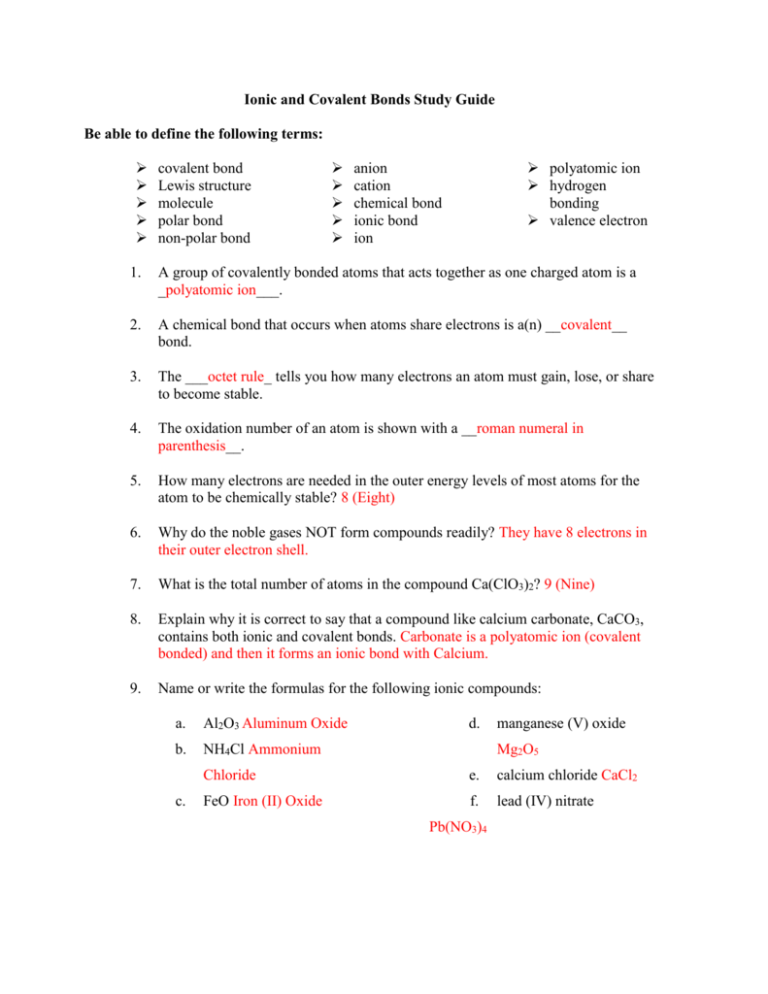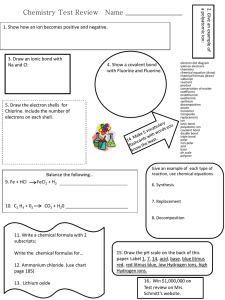Ionic & Covalent Bonds Study Guide
advertisement

Ionic and Covalent Bonds Study Guide Be able to define the following terms: covalent bond Lewis structure molecule polar bond non-polar bond polyatomic ion hydrogen bonding valence electron anion cation chemical bond ionic bond ion 1. A group of covalently bonded atoms that acts together as one charged atom is a _polyatomic ion___. 2. A chemical bond that occurs when atoms share electrons is a(n) __covalent__ bond. 3. The ___octet rule_ tells you how many electrons an atom must gain, lose, or share to become stable. 4. The oxidation number of an atom is shown with a __roman numeral in parenthesis__. 5. How many electrons are needed in the outer energy levels of most atoms for the atom to be chemically stable? 8 (Eight) 6. Why do the noble gases NOT form compounds readily? They have 8 electrons in their outer electron shell. 7. What is the total number of atoms in the compound Ca(ClO3)2? 9 (Nine) 8. Explain why it is correct to say that a compound like calcium carbonate, CaCO3, contains both ionic and covalent bonds. Carbonate is a polyatomic ion (covalent bonded) and then it forms an ionic bond with Calcium. 9. Name or write the formulas for the following ionic compounds: a. Al2O3 Aluminum Oxide b. NH4Cl Ammonium c. d. manganese (V) oxide Mg2O5 Chloride e. calcium chloride CaCl2 FeO Iron (II) Oxide f. lead (IV) nitrate Pb(NO3)4 10. Name or write the formulas for the following covalent compounds a. P2O5 Diphosphorus Pentoxide b. HF Ignore (I didn’t cover acids) c. HClO Ignore (I didn’t cover acids) d. carbon tetrachloride CCl4 e. hydrochloric acid Ignore (I didn’t cover acids) f. carbonic acid Ignore (I didn’t cover acids)











